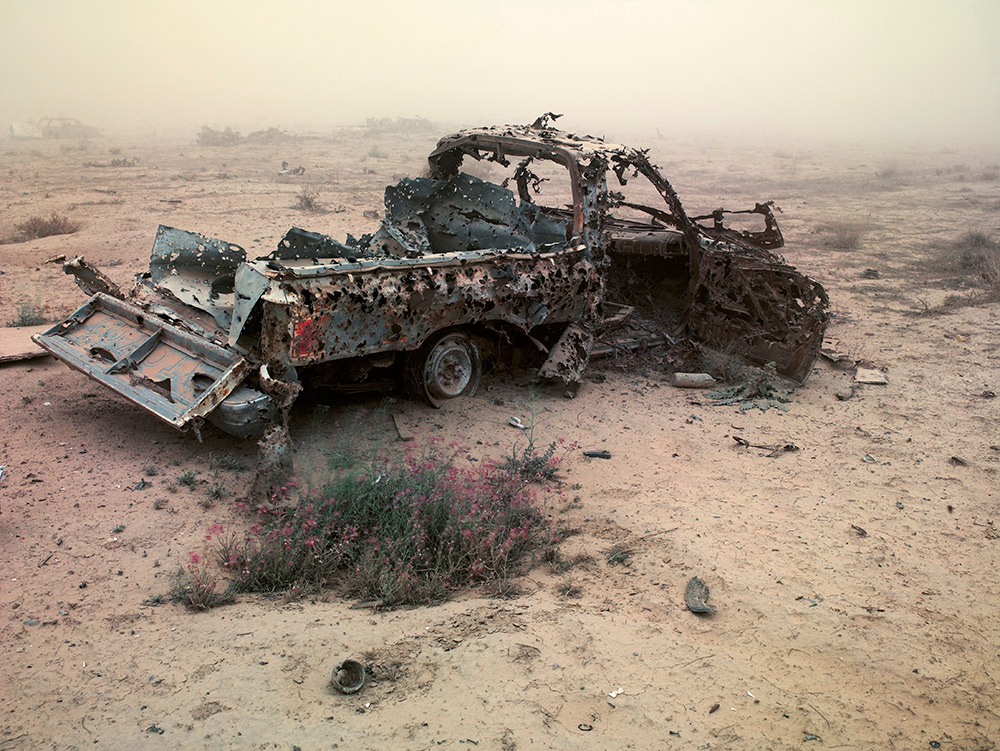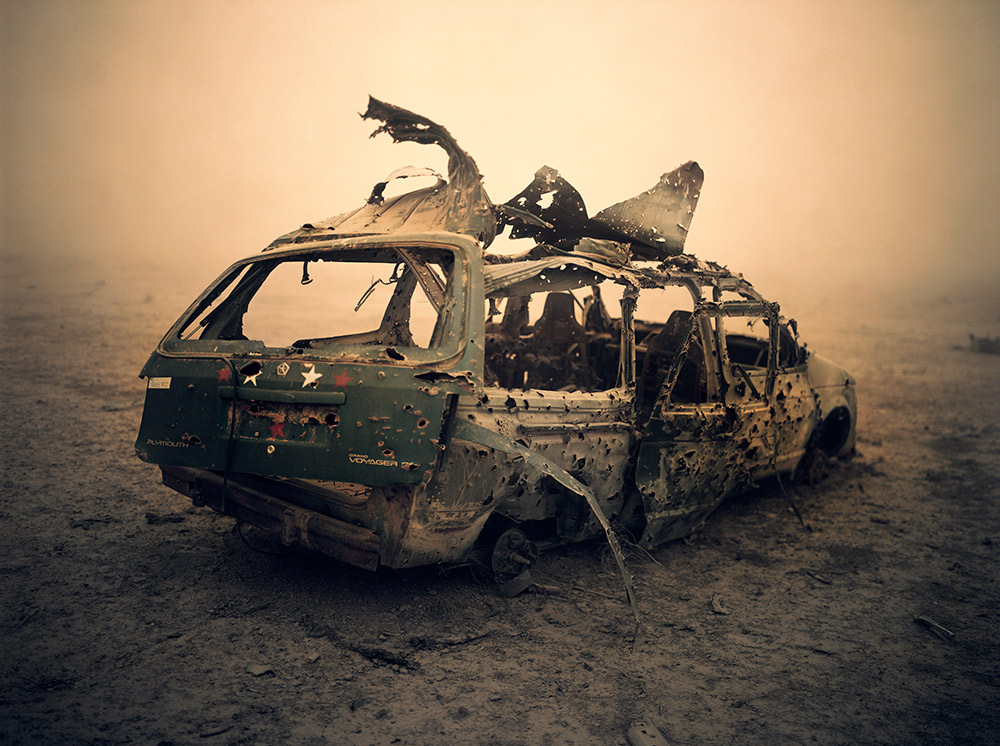Richard Mosse, Nomads
Richard Mosse’s photography captures the beauty and tragedy in war and destruction. Mosse has shot abandoned plane wrecks in the furthest reaches of the planet and the former palaces of Uday and Saddam Hussein now occupied by US military forces. His most recent series, Infra captures the ongoing war between rebel factions and the Congolese national army in the Democratic Republic of Congo.
The Infra series is marked by Mosse’s use of Kodak Aerochrome, a discontinued reconnaissance infrared film. The film registers chlorophyll in live vegetation. The result is the lush Congolese rainforest rendered into a beautifully surreal landscape of pinks and reds. Mosse said in an interview with The British Journal of Photography “I wanted to export this technology to a harder situation, to up-end the generic conventions of calcified mass-media narratives and challenge the way we’re allowed to represent this forgotten conflict… I wanted to confront this military reconnaissance technology, to use it reflexively in order to question the ways in which war photography is constructed.”
Mosse is the winner of the 2014 Deutsche Börse Photography Prize. In 2013, Mosse represented Ireland in the Venice Biennale with the The Enclave an immersive six-channel video installation that utilized 16mm infrared film.
The piece is an attempt, as Mosse explains on CNN.com, to bring “two counter-worlds into collision: art’s potential to represent narratives so painful that they exist beyond language, and photography’s capacity to document specific tragedies and communicate them to the world.”





